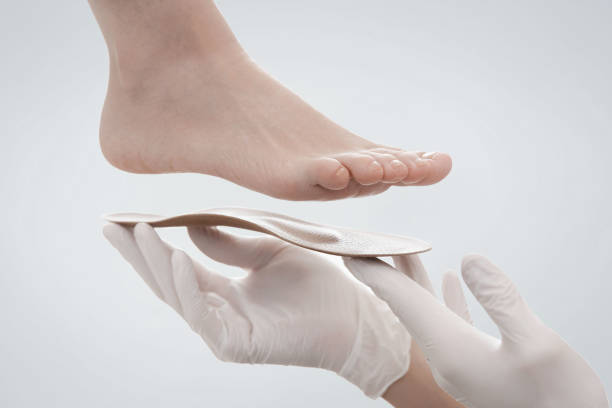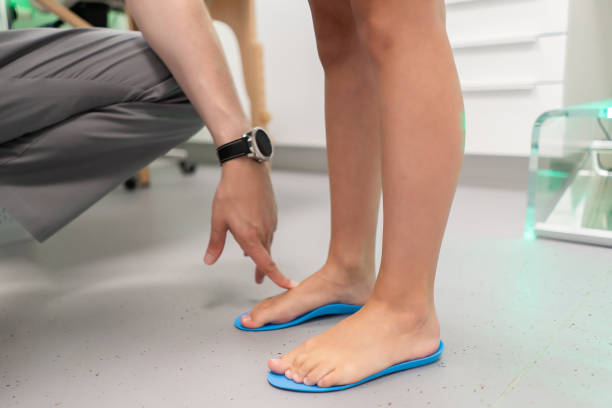Flat Feet

Flatfoot (formally known as pes planus) is a very common disorder that may lead to pain in the foot and ankle. It describes a foot which has a low or “flattened” arch. There are varying degrees and various types of flat feet.
This condition occurs in children (congenital flatfoot) as well as in adults (acquired flatfoot). It is common to see a normal arch while sitting, but upon standing the arch may flatten. This can give the appearance of the ankle rolling in and the heel rolling out. This process is called “pronation.” The toes may also point outwards. Flatfoot can also lead to the development of bunions and hammertoes.
What causes flat feet?
If your feet don’t have much of an arch or your foot rolls inward (called overpronation) so that your arches collapse when you stand, you have a condition called flat feet. Some things that contribute to flat feet include:
- Injuries
- Arthritis
- Diabetes
- Genetics
What are the symptoms of flat feet?
Sometimes, flat feet don’t cause any problems or additional symptoms. But flat feet can change the balance of your gait, and affect the alignment of your ankles, knees, and even your hips. Walking and bearing weight on misaligned joints can lead to symptoms like:
- Arch pain
- Heel pain
- Ankle pain
- Ankle instability
- Knee pain
- Muscle pain
- Tenderness
- Swelling
- You could find that your symptoms get worse when you walk, stand, or exercise, and that they get better after you rest for a while.

How are flat feet treated?
Your podiatrist will design a customised plan to address your flat feet based on your individual needs. Your treatment plan can include:
- Custom orthotics
- Anti-inflammatory medications
- Physical therapy
- Bracing or splints
- Changes in footwear
- Changes in exercise

